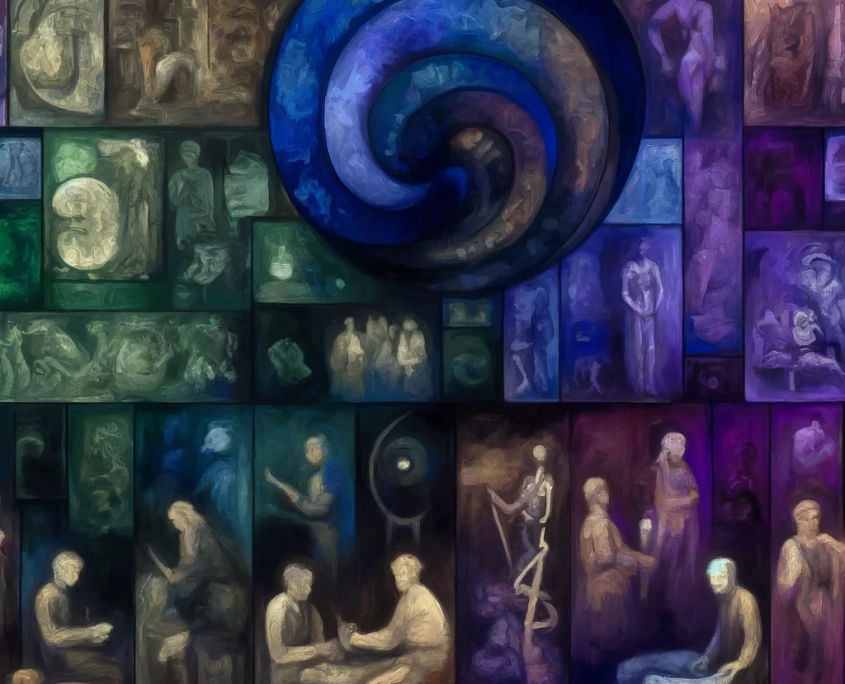A Brief History of Bodywork
From Ancient Rituals to Modern Healing: The Evolution of Bodywork and Its Integration into Contemporary Healthcare

Bodywork is a form of manual therapy that involves various techniques such as massage, manipulation, and stretching to improve physical function, reduce pain, and promote relaxation. The practice of bodywork has a long and diverse history, with different cultures developing their own unique forms of this therapy. Over time, the techniques and principles of bodywork have evolved, leading to the modern-day practices of physical therapy, chiropractic, and massage therapy. This essay provides a comprehensive overview of the history and evolution of bodywork.
History
The practice of bodywork can be traced back to ancient civilizations, with evidence of massage found in ancient Chinese texts dating back to 2700 BCE. Similarly, the ancient Greeks and Romans used massage as a form of therapy, with Hippocrates himself writing about the benefits of massage in his medical texts. The practice of bodywork also played an important role in Indian Ayurvedic medicine, which emphasized the importance of touch as a healing tool.
In the Middle Ages, the practice of bodywork continued to evolve, with knights and noblemen receiving massage and other forms of manual therapy to alleviate pain and improve physical function. In the Renaissance period, the practice of anatomy and physiology advanced, leading to the development of more sophisticated forms of bodywork.
The modern-day practice of physical therapy can be traced back to the work of Swedish physician Per Henrik Ling in the 19th century. Ling developed a system of manual therapy that combined massage, stretching, and exercise to improve physical function and reduce pain. His work laid the foundation for the field of physical therapy, which has continued to evolve and develop over the past century.
In the early 20th century, chiropractic emerged as a distinct form of bodywork, focusing on the manipulation of the spine and other joints to improve physical function and reduce pain. Chiropractic has become increasingly popular in recent years, with many people seeking out this form of therapy for conditions such as back pain, neck pain, and headaches.
Massage therapy has also evolved significantly over the past century, with a growing body of research supporting the effectiveness of massage for a wide range of conditions. Today, massage therapy is widely recognized as a legitimate form of healthcare, with many people incorporating massage into their regular self-care routines.
Evolution
As the field of bodywork has evolved, new techniques and modalities have emerged. Some of the most popular forms of bodywork today include:
- Myofascial release: a form of manual therapy that involves the application of sustained pressure to the connective tissue in the body to alleviate pain and improve physical function.
- Craniosacral therapy: a form of bodywork that involves gentle manipulation of the bones of the skull and spine to improve the flow of cerebrospinal fluid and promote relaxation.
- Acupuncture: a traditional Chinese medicine practice that involves the insertion of thin needles into specific points on the body to promote healing and balance.
- Reflexology: a form of bodywork that involves the application of pressure to specific points on the feet and hands to promote relaxation and improve overall health.
In recent years, the field of bodywork has also become increasingly integrated with conventional medicine. Many hospitals now offer massage therapy and other forms of bodywork to patients, recognizing the benefits of these therapies for pain management, stress reduction, and overall wellbeing.
Conclusion
The practice of bodywork has a long and diverse history, with different cultures developing their own unique forms of this therapy. From the ancient Chinese and Greeks to the modern-day practices of physical therapy, chiropractic, and massage therapy, bodywork has continued to evolve and develop over the centuries. Today, bodywork is recognized as an important form of healthcare, with many people incorporating these therapies into their regular self-care routines.
